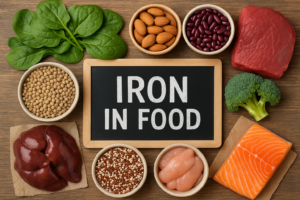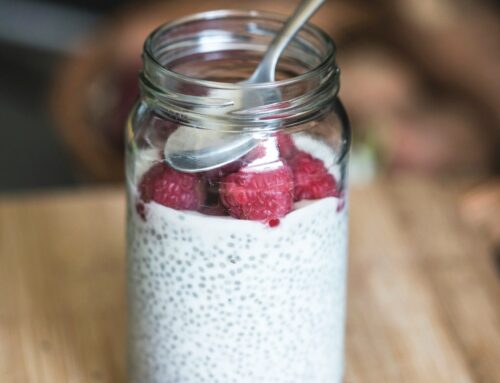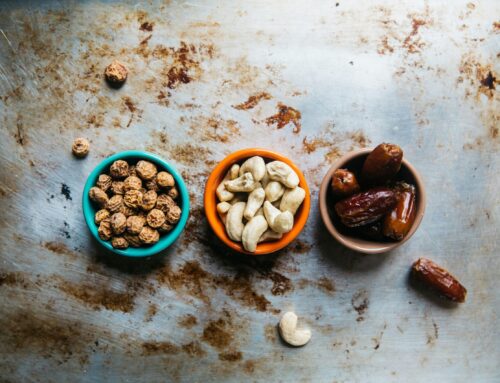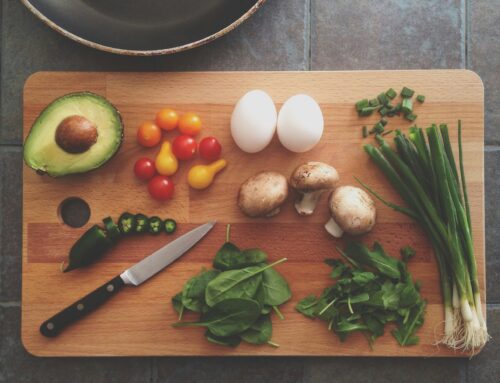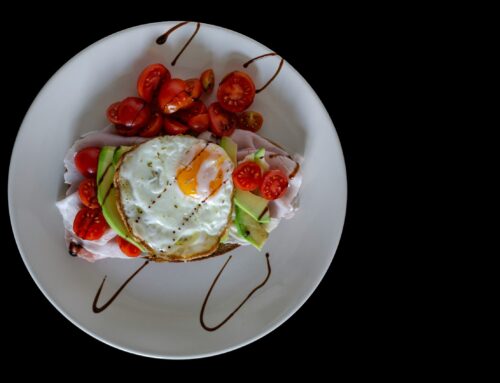Understanding Dietary Iron
Dietary iron is an essential mineral crucial for various bodily functions. It exists in two primary forms: heme and non-heme iron. Heme iron is derived predominantly from animal sources, such as red meat, poultry, and fish, making it more easily absorbed by the body. Non-heme iron, on the other hand, is primarily found in plant-based foods, including legumes, grains, and leafy greens. While non-heme iron constitutes the majority of dietary iron intake globally, it is generally less bioavailable compared to its heme counterpart.
The role of dietary iron in the body cannot be overstated. It is vital for the production of hemoglobin, the protein in red blood cells responsible for oxygen transport. Adequate levels of iron ensure that oxygen is efficiently delivered to tissues and organs, facilitating energy production and metabolic processes essential for maintaining overall health. Furthermore, dietary iron is integral in the functioning of enzymes involved in DNA synthesis and cellular respiration, emphasizing its multifaceted importance in physiological processes.
Iron deficiency can lead to significant health issues, particularly anemia, which is characterized by a reduced number of red blood cells or insufficient hemoglobin. Symptoms of iron deficiency anemia may include fatigue, weakness, and decreased immune function, adversely impacting daily activities and quality of life. In children and pregnant women, iron deficiency is particularly concerning, as it can hinder development and growth. Thus, ensuring adequate intake of dietary iron is crucial for preventing deficiency and promoting optimal health throughout all life stages.
Why Iron Is Important for Your Health
Iron is a fundamental mineral that plays a crucial role in various physiological processes within the human body. Its most notable function is its involvement in the production of hemoglobin, a protein found in red blood cells responsible for transporting oxygen from the lungs to the rest of the body. Adequate iron levels are essential for maintaining optimal oxygen delivery to tissues, which is vital for overall physical and cognitive health.
Beyond its role in blood production, iron also supports the immune system. It aids in the proliferation and maturation of immune cells, thereby enhancing the body’s ability to fight off infections and illnesses. A deficiency in iron can compromise immune function, leading to increased susceptibility to diseases. This aspect makes it especially important for populations at risk of iron deficiency, including pregnant women, children, and athletes. Pregnant women require more iron to support the growing fetus and to prevent anemia, which is common during pregnancy. Children, who are in a critical phase of growth and development, also need sufficient iron for proper cognitive and physical development.
Adequate iron levels are not only critical for physical health but also significantly impact cognitive function. Studies indicate that low iron levels can lead to impaired cognitive performance, affecting concentration, memory, and overall mental clarity. This is particularly concerning for children and adolescents, where optimal cognitive development is essential for academic achievement.
Lastly, athletes, who often experience increased iron requirements due to rigorous physical activity and potential losses through sweat, must pay careful attention to their iron intake. Insufficient iron levels can lead to fatigue and decreased athletic performance, emphasizing the need for adequate nutritional strategies to maintain necessary iron levels.
Food Sources of Iron: What to Eat
Iron is a vital mineral that plays several critical roles in the human body, particularly in oxygen transport and energy metabolism. To maintain adequate iron levels, it is essential to incorporate iron-rich foods into one’s diet. These sources can be divided into two categories: heme iron, found in animal products, and non-heme iron, present in plant-based foods.
Animal sources typically offer more bioavailable iron, meaning the body can absorb it more effectively. For instance, red meats such as beef and lamb stand out as excellent sources of heme iron, providing around 2.1 to 2.7 mg of iron per 100 grams. Poultry, like chicken and turkey, is also a good option, contributing about 1.1 to 1.3 mg of iron per 100 grams. Seafood such as oysters and fish—particularly canned tuna and sardines—further enhance iron intake, with oysters containing as much as 7.0 mg per 100 grams.
For those following plant-based diets, there are numerous non-heme iron sources available. Legumes, including lentils and chickpeas, are rich in iron, offering approximately 3.3 mg per 100 grams. Nuts and seeds, particularly pumpkin seeds and cashews, also contribute helpful amounts, ranging from 2.0 to 4.0 mg per 100 grams. Additionally, many breakfast cereals are fortified with iron, providing a convenient option to help meet daily requirements, often containing around 4.5 mg per serving.
Incorporating a variety of these foods can help ensure sufficient iron intake. Combining plant sources with vitamin C-rich foods, such as citrus fruits and bell peppers, can significantly enhance the absorption of non-heme iron. Understanding these dietary sources is crucial for supporting optimal health and avoiding iron deficiency.
The Best Ways to Combine Foods for Optimal Iron Absorption
Iron is a crucial nutrient necessary for various bodily functions, including the formation of hemoglobin, which transports oxygen in the blood. However, not all dietary sources of iron are equally absorbed by the body. It is important to understand how to combine foods effectively to enhance iron absorption, particularly from non-heme iron sources found in plant-based foods.
One of the most effective ways to boost iron absorption is by pairing non-heme iron-rich foods with those high in vitamin C. Vitamin C enhances the solubility of non-heme iron, making it easier for the body to absorb. For instance, consuming lentils or beans—rich in non-heme iron—alongside a citrus fruit such as a grapefruit or orange can significantly improve iron intake. A simple meal idea could include a bean salad with orange segments or a lentil soup garnished with fresh cilantro and lime juice.
In addition to vitamin C, other nutrients can also facilitate iron absorption. For example, combining iron-rich foods with sources of vitamin A, such as sweet potatoes, carrots, or leafy greens, can further enhance absorption. A nutritious option might consist of sautéed spinach with carrots or a sweet potato and black bean bowl topped with avocado. The presence of healthy fats, like those found in avocado, can also aid in the absorption of fat-soluble vitamins, helping to create a well-rounded meal.
Avoiding the intake of certain substances that inhibit iron absorption is just as essential. Foods or beverages high in calcium, polyphenols (found in tea and coffee), or phytates (present in whole grains) can hinder iron absorption if consumed in large amounts at the same time as iron sources. Therefore, spacing out meals containing these inhibitors can help optimize iron intake. Overall, mixing various food groups strategically can lead to optimal iron absorption and a healthier dietary pattern.
Heme vs. Non-Heme Iron: Which Is Better for Absorption?
Iron is an essential mineral that plays a crucial role in various physiological functions, particularly in the formation of hemoglobin and myoglobin, which are vital for oxygen transport in the body. Iron exists in two primary forms: heme and non-heme. Heme iron, predominantly found in animal sources such as red meat, poultry, and fish, is generally recognized for its superior absorption rate compared to non-heme iron, which is primarily sourced from plant-based foods like legumes, nuts, seeds, and leafy greens.
The body absorbs approximately 15-35% of heme iron, making it considerably more bioavailable than non-heme iron, which has an absorption rate of only 2-20%. Several factors influence this disparity in absorption. Firstly, heme iron is found in a form that can be more easily utilized by the body, while non-heme iron requires additional conversion processes, such as reduction to a ferrous state, before it can be absorbed. Additionally, certain dietary components can inhibit or enhance the absorption of non-heme iron. For example, phytates, found in whole grains and legumes, and polyphenols, present in tea and coffee, can hinder non-heme iron absorption. Conversely, vitamin C and certain organic acids can significantly boost the uptake of non-heme iron when consumed together.
Despite the well-documented advantages of heme iron, there are common misconceptions. Some individuals believe that plant-based diets entirely lack sufficient iron or that non-heme iron is inadequate for meeting dietary needs. However, for those consuming a balanced diet rich in vitamin C and low in inhibitors, non-heme iron can provide adequate amounts of this essential mineral. Furthermore, individuals who follow vegetarian or vegan diets can achieve sufficient iron levels through strategic food combinations and careful planning. Ultimately, while heme iron may be absorbed more efficiently, both forms contribute valuable iron and can support overall health when incorporated appropriately into the diet.
When to Consider Iron Supplements
Iron is a vital mineral essential for various bodily functions, including oxygen transport and energy production. However, there are specific circumstances under which individuals may require iron supplementation. Identifying these situations is crucial for maintaining optimal health and preventing potential complications associated with iron deficiency.
One of the primary reasons to consider iron supplementation is a diagnosed iron deficiency. This condition, often characterized by fatigue, weakness, and pale skin, can occur when the body does not absorb enough iron from the diet. Blood tests carried out by healthcare professionals can confirm low levels of hemoglobin and ferritin, indicators of iron status. Individuals diagnosed with anemia, particularly those with low iron levels, should follow their healthcare provider’s recommendations regarding supplementation.
Certain dietary restrictions can also lead to insufficient iron intake. Vegetarians and vegans, for example, may struggle to meet their iron requirements, as plant-based food sources typically contain non-heme iron, which is less absorbable than heme iron found in animal products. It may be beneficial for those following these diets to consider supplementation or, alternatively, focus on consuming iron-rich plant foods paired with vitamin C to enhance absorption.
During specific life stages, such as pregnancy, the body’s demand for iron increases significantly. Pregnant women require additional iron to support fetal development and expand their blood volume. Healthcare providers often recommend prenatal vitamins that include iron to help meet these heightened needs. Furthermore, individuals engaged in intense physical activity may experience increased iron depletion through sweat and enhanced red blood cell turnover, necessitating higher iron intake either through diet or supplements.
Recognizing the signs of iron deficiency—such as unusual fatigue, dizziness, or shortness of breath—encourages individuals to assess their iron levels. Consulting with a healthcare professional can provide personalized guidance on when iron supplements may be necessary for health maintenance.
How to Use Iron Supplements Safely and Effectively
Iron supplements can play a crucial role in addressing iron deficiency and improving overall health. However, their effectiveness largely depends on their safe and appropriate use. It is essential to follow specific guidelines for dosing, timing of intake, and be aware of potential side effects associated with iron supplementation to maximize benefits while minimizing risks.
When starting iron supplements, it is advisable to consult with a healthcare provider. This consultation is particularly important for individuals with existing health conditions, such as gastrointestinal disorders or those who are pregnant, as these factors can influence iron absorption and overall safety. A healthcare professional can help determine the appropriate dosage based on an individual’s specific needs and health status. Generally, the recommended daily allowance for iron varies by age, gender, and life stage; thus, personalized advice is essential.
Timing of intake is another crucial consideration. Iron is best absorbed on an empty stomach, so taking supplements at least one hour before meals or two hours after eating is often recommended. However, if gastrointestinal discomfort occurs, taking iron with a small amount of food may alleviate symptoms while still allowing for effective absorption. It is also beneficial to avoid taking iron supplements concurrently with calcium or antacid medications, as these can hinder absorption.
Potential side effects of iron supplements include gastrointestinal issues such as nausea, constipation, or diarrhea. These symptoms can often be managed by adjusting the dose or form of the supplement. Ferrous bisglycinate and ferrous fumarate are examples of formulations that may be easier on the stomach. Importantly, overdose or prolonged usage without medical supervision can lead to serious health complications, emphasizing the importance of following a healthcare provider’s recommendations.
Tips for Increasing Dietary Iron Intake
Increasing dietary iron intake can be achieved through thoughtful meal planning, innovative cooking methods, and conscious lifestyle changes. A well-balanced diet that includes a variety of iron-rich foods, along with consideration of how they are prepared, can significantly enhance iron absorption and overall health.
When planning meals, focus on incorporating both heme and non-heme iron sources. Heme iron, found in animal products such as red meat, fish, and poultry, is generally more easily absorbed compared to non-heme iron, which is present in plant-based foods like lentils, beans, and fortified cereals. Combining these sources within meals can facilitate better iron uptake. For instance, consider adding beans to a meat-based chili or pairing spinach with grilled chicken.
Cooking methods can also play a crucial role in maximizing iron content. Using cast iron cookware has been shown to increase the iron levels in food, especially when cooking acidic ingredients like tomatoes. Additionally, soaking and sprouting beans, grains, or seeds prior to cooking can enhance their mineral absorption capacity and improve the bioavailability of iron.
Mindful eating practices are equally important. Consuming vitamin C-rich foods, such as citrus fruits, strawberries, and bell peppers, alongside iron-rich meals can significantly boost non-heme iron absorption. Moreover, being aware of certain food combinations is essential; for example, it is advisable to avoid tea or coffee during meals, as they contain compounds that inhibit iron absorption.
Snacks can serve as an excellent opportunity to incorporate more iron into one’s diet. Options like hummus paired with carrot sticks, a handful of nuts, or yogurt with fortified granola can make nutritious, iron-rich choices. By applying these practical tips and being intentional about iron-rich foods, individuals can effectively increase their dietary iron intake and promote better health.
Conclusion: Making Informed Choices About Iron
In today’s fast-paced world, understanding the importance of dietary iron is crucial for maintaining overall health and well-being. Iron plays a pivotal role in various physiological functions, including oxygen transport, energy metabolism, and immune system support. Recognizing its significance can help individuals make informed decisions about their nutritional intake. As detailed in previous sections, dietary iron is available in two forms: heme, found in animal sources, and non-heme, found in plant-based foods. Each type has its unique benefits and absorption rates, which can significantly influence personal health outcomes.
When considering food sources, it is essential to include a variety of iron-rich options in daily meals. For omnivores, red meat, poultry, and fish provide heme iron, while legumes, nuts, seeds, and fortified cereals are excellent choices for individuals following a vegetarian or vegan diet. Combining these sources with vitamin C-rich foods can enhance iron absorption, thus improving overall iron status. Monitoring dietary habits and being aware of signs of iron deficiency, such as fatigue or weakness, is essential for long-term health.
Moreover, while dietary supplements can be beneficial for those with confirmed deficiencies or specific health conditions, it is vital to consult healthcare professionals before introducing them into one’s routine. Excessive iron intake can lead to adverse health effects, making personalized advice important. Embracing a proactive approach toward iron intake tailored to individual dietary preferences and health needs can help maintain optimal iron levels. By prioritizing informed choices about dietary iron, individuals can contribute to their overall health and well-being, ensuring they meet their nutritional requirements effectively.
